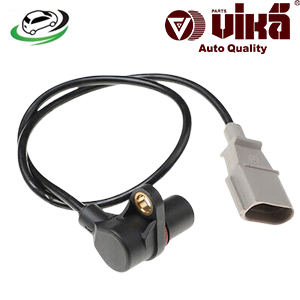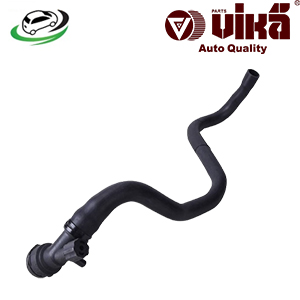-17%
Get Vacuum Check Valve (3-Way) A4 Audi B6/ A6 Audi C6/ A4 Quattro Audi B6/A4 Audi B7 / VW Passat Engine Code AWM 07C133529A
A 3-way vacuum check valve is a specialized component used in various automotive systems, particularly those involving vacuum-operated devices. It plays a crucial role in controlling and directing vacuum flow within the system, ensuring that vacuum is maintained or isolated where needed to optimize the performance of certain engine functions. This detailed overview will cover the function, design, applications, benefits, common issues, and maintenance of a 3-way vacuum check valve.
1. Function and Role of a 3-Way Vacuum Check Valve
A 3-way vacuum check valve is designed to manage the flow of vacuum between three different ports. Unlike a standard check valve, which allows flow in only one direction, a 3-way valve controls the flow between multiple vacuum sources or destinations. Its primary function is to direct or block vacuum flow based on the pressures at each port, ensuring that certain components in the vehicle receive the necessary vacuum or are isolated from vacuum when not required.
In automotive applications, vacuum is often used to operate various components such as brake boosters, EGR (Exhaust Gas Recirculation) valves, HVAC (Heating, Ventilation, and Air Conditioning) systems, and turbocharger wastegates. The 3-way vacuum check valve ensures that these systems receive vacuum when needed while preventing backflow or loss of vacuum, which could impair system performance.
2. Design and Construction of a 3-Way Vacuum Check Valve
The 3-way vacuum check valve typically consists of the following components:
- Valve Body: The valve body is the outer casing that houses the internal components of the check valve. It is usually made of durable materials such as plastic or metal, capable of withstanding high temperatures and chemical exposure from engine environments.
- Three Ports: The valve has three distinct ports, often labeled as Port 1 (inlet), Port 2 (outlet), and Port 3 (alternate outlet or return). These ports are connected to different parts of the vacuum system. The configuration allows vacuum to flow between these ports in a controlled manner.
- Internal Valve Mechanism: Inside the valve body, there is a mechanism (often involving a diaphragm, spring, or ball) that controls the flow of vacuum between the ports. The mechanism allows vacuum to pass from one port to another while blocking or redirecting flow as necessary. The internal components are designed to respond to pressure differences between the ports.
- Seals and O-Rings: To prevent vacuum leaks, the valve contains seals or O-rings around the ports and internal components. These ensure a tight fit and proper functioning of the valve by maintaining an airtight seal.
3. Applications of a 3-Way Vacuum Check Valve
3-way vacuum check valves are used in a variety of automotive systems, each requiring precise control of vacuum to function properly. Common applications include:
- Brake Boosters: The brake booster uses vacuum to multiply the force applied by the driver on the brake pedal, making braking easier. The 3-way check valve can manage the vacuum supply to the booster, ensuring that the booster receives sufficient vacuum while preventing the vacuum from leaking back into the intake manifold.
- EGR Systems: The Exhaust Gas Recirculation system reduces nitrogen oxide (NOx) emissions by recirculating a portion of the exhaust gases back into the engine intake. A 3-way vacuum check valve may be used to control the vacuum supply to the EGR valve, ensuring it opens or closes at the correct times based on engine conditions.
- Turbocharger Systems: In turbocharged engines, the wastegate controls the boost pressure by diverting exhaust gases away from the turbocharger’s turbine. The wastegate actuator is often controlled by vacuum, and a 3-way check valve helps regulate the vacuum applied to the actuator, ensuring the correct boost pressure is maintained.
- HVAC Systems: The HVAC system in a vehicle often uses vacuum to operate blend doors and control airflow. A 3-way vacuum check valve can manage the vacuum flow to these components, ensuring that the climate control system operates correctly.
4. Benefits of Using a 3-Way Vacuum Check Valve
- Precise Vacuum Control: The primary benefit of a 3-way vacuum check valve is its ability to precisely control vacuum flow between different parts of a system. This precision is crucial for the proper operation of components like brake boosters, EGR valves, and turbochargers, which rely on accurate vacuum management.
- Preventing Backflow: One of the key functions of a check valve is to prevent backflow. In the case of a 3-way valve, this means ensuring that vacuum does not leak back into parts of the system where it is not needed or could cause issues, such as the intake manifold or other vacuum-sensitive components.
- Enhanced System Reliability: By maintaining the correct vacuum levels and preventing leaks, the 3-way vacuum check valve helps improve the reliability and longevity of the systems it controls. This can lead to better overall vehicle performance and reduced wear on components.
- Versatility: The 3-way design offers flexibility in routing vacuum to multiple destinations, allowing for more complex vacuum management in modern vehicles. This versatility makes the valve suitable for a wide range of applications across different vehicle models and engine types.
5. Common Issues and Failures
While 3-way vacuum check valves are generally durable and reliable, they can experience issues that may affect their performance and the systems they control:
- Vacuum Leaks: Over time, the seals or O-rings within the valve can degrade or become damaged, leading to vacuum leaks. A vacuum leak can cause the systems that rely on vacuum, such as the brake booster or HVAC controls, to malfunction.
- Blockages: Dirt, debris, or carbon deposits can accumulate inside the valve, blocking the flow of vacuum between the ports. This can lead to reduced performance or failure of the components that depend on the valve.
- Internal Valve Failure: The internal mechanism that controls vacuum flow can wear out or break, preventing the valve from functioning correctly. This could result in an inability to maintain the necessary vacuum levels or a failure to isolate vacuum when required.
- Incorrect Installation: If the valve is installed incorrectly, with the ports connected to the wrong parts of the system, it may not function as intended. This can cause various issues, such as improper vacuum distribution or even total system failure.
6. Symptoms of a Faulty 3-Way Vacuum Check Valve
When a 3-way vacuum check valve begins to fail, it can cause noticeable symptoms in the vehicle’s performance and behavior:
- Hard Braking: If the valve is used in the brake booster system, a failure may result in reduced or inconsistent brake assist, making the brake pedal feel hard and requiring more effort to stop the vehicle.
- Engine Performance Issues: A faulty valve in the EGR or turbocharger system can lead to engine performance problems, such as rough idling, hesitation, or loss of power. This is due to incorrect vacuum levels affecting these critical systems.
- HVAC Malfunctions: In the HVAC system, a failing vacuum check valve can cause the climate control to operate incorrectly, with issues such as air not being directed to the desired vents or the inability to switch between different airflow modes.
- Check Engine Light: In some cases, a malfunctioning vacuum check valve can trigger the check engine light. Diagnostic trouble codes related to the systems controlled by the valve, such as EGR or turbocharger boost control, may be stored in the vehicle’s ECU.
7. Maintenance and Replacement
Regular maintenance and timely replacement of the 3-way vacuum check valve are crucial for ensuring the proper functioning of the systems it controls:
- Regular Inspection: Inspect the valve and its connections during routine maintenance. Look for signs of wear, damage, or vacuum leaks. Ensure that the vacuum hoses connected to the valve are in good condition and properly secured.
- Testing the Valve: The valve can be tested by applying vacuum to the ports and observing whether it holds vacuum correctly or allows flow in the desired direction. Specialized tools, such as a vacuum pump or gauge, can be used for this purpose.
- Cleaning: If the valve is dirty or clogged, it may be possible to clean it and restore functionality. However, if cleaning does not resolve the issue, the valve may need to be replaced.
- Replacing the Valve: If the valve is faulty or damaged, it should be replaced promptly to avoid further issues with the systems it controls. Replacement involves disconnecting the vacuum hoses, removing the old valve, and installing a new one. Ensure that the new valve is oriented correctly with the ports connected to the appropriate components.
- Using Quality Parts: When replacing a 3-way vacuum check valve, it’s important to use high-quality parts that meet OEM specifications. This ensures proper fitment and reliable operation, reducing the likelihood of future issues.
8. Importance in Modern Vehicles
In modern vehicles, vacuum systems play an increasingly important role in controlling various engine and auxiliary functions. The 3-way vacuum check valve is a critical component in managing these systems, helping to ensure that vacuum is directed where it is needed and preventing issues caused by vacuum loss or backflow.
As vehicles become more complex, with advanced engine management and emissions control systems, the need for reliable vacuum control becomes even more critical. The 3-way vacuum check valve contributes to the overall efficiency, performance, and safety of the vehicle by ensuring that vacuum-operated systems function as intended.
Follow us on Facebook for more parts.



